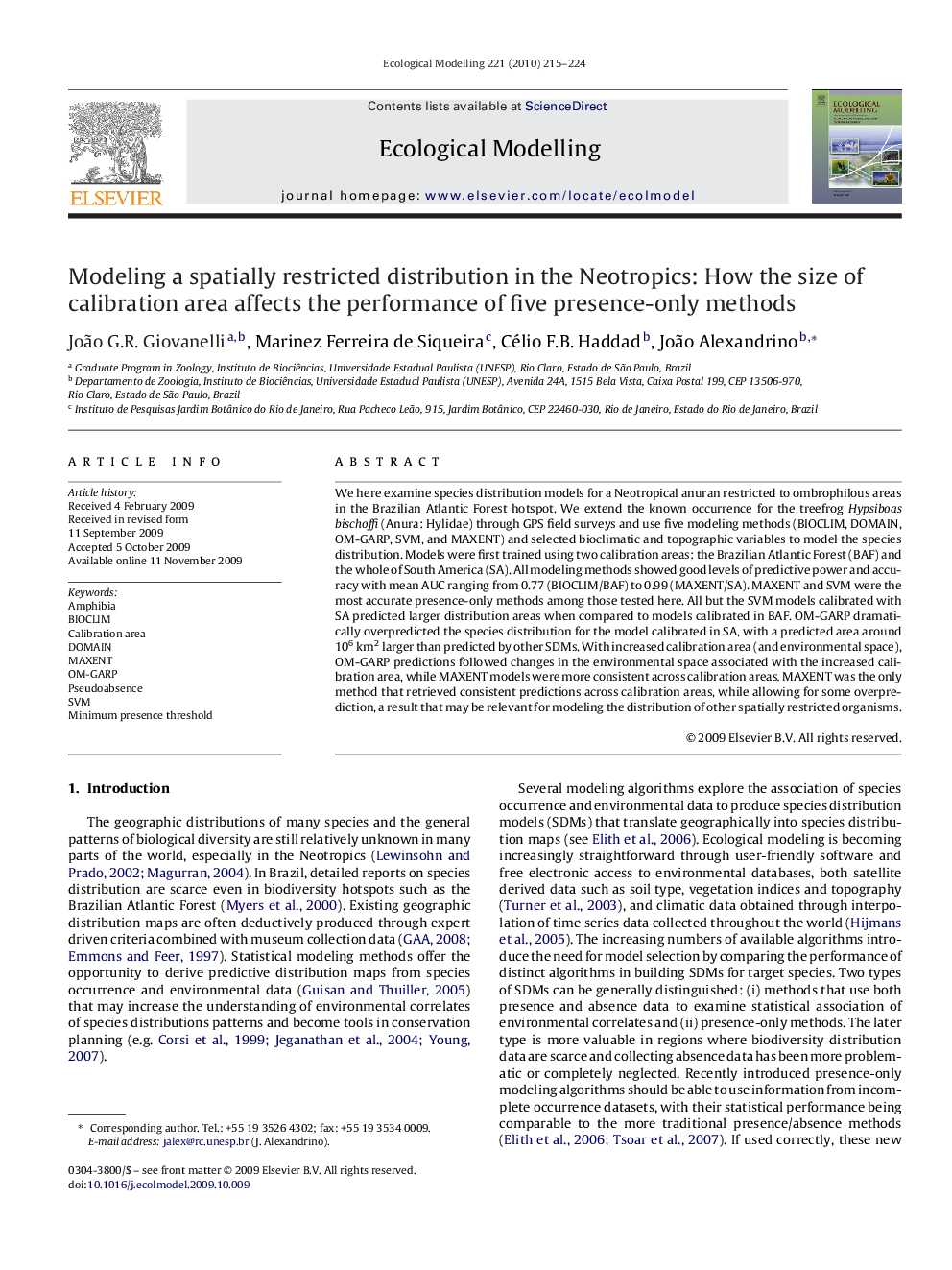| Article ID | Journal | Published Year | Pages | File Type |
|---|---|---|---|---|
| 4377485 | Ecological Modelling | 2010 | 10 Pages |
We here examine species distribution models for a Neotropical anuran restricted to ombrophilous areas in the Brazilian Atlantic Forest hotspot. We extend the known occurrence for the treefrog Hypsiboas bischoffi (Anura: Hylidae) through GPS field surveys and use five modeling methods (BIOCLIM, DOMAIN, OM-GARP, SVM, and MAXENT) and selected bioclimatic and topographic variables to model the species distribution. Models were first trained using two calibration areas: the Brazilian Atlantic Forest (BAF) and the whole of South America (SA). All modeling methods showed good levels of predictive power and accuracy with mean AUC ranging from 0.77 (BIOCLIM/BAF) to 0.99 (MAXENT/SA). MAXENT and SVM were the most accurate presence-only methods among those tested here. All but the SVM models calibrated with SA predicted larger distribution areas when compared to models calibrated in BAF. OM-GARP dramatically overpredicted the species distribution for the model calibrated in SA, with a predicted area around 106 km2 larger than predicted by other SDMs. With increased calibration area (and environmental space), OM-GARP predictions followed changes in the environmental space associated with the increased calibration area, while MAXENT models were more consistent across calibration areas. MAXENT was the only method that retrieved consistent predictions across calibration areas, while allowing for some overprediction, a result that may be relevant for modeling the distribution of other spatially restricted organisms.
